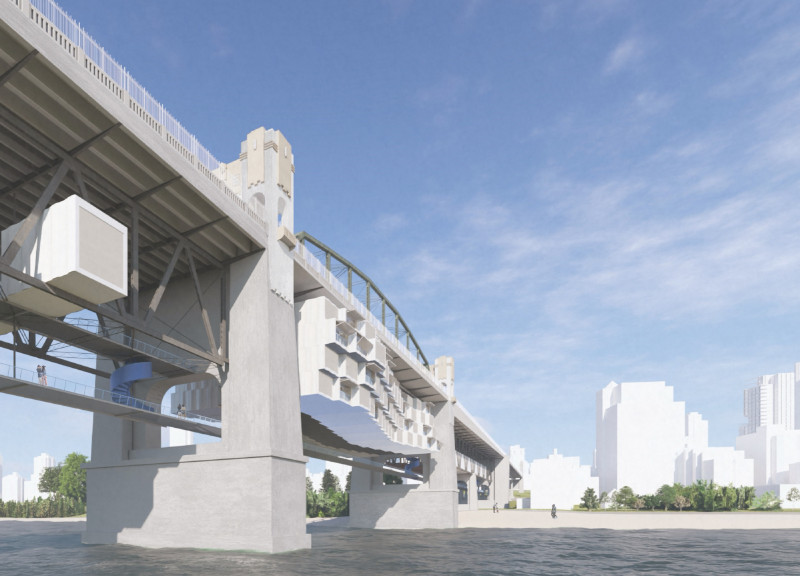5 key facts about this project
At its core, the project represents a convergence of distinct spaces that cater to various community activities. The facility includes areas for educational programs, recreational activities, and communal gatherings, reflecting the diverse needs of the community it serves. This multifunctionality is a significant aspect of the design, promoting a sense of belonging and fostering communal ties. The careful organization of spaces ensures not only functionality but also an inviting atmosphere that encourages community engagement.
In terms of materiality, the project employs various sustainable materials that align with contemporary ecological practices. Utilizing local stone, reclaimed wood, and energy-efficient glazing, the architecture emphasizes a connection to the surroundings while minimizing environmental impact. The choice of materials is indicative of a broader design philosophy that champions sustainability without sacrificing aesthetic value. The natural textures and tones of the materials contribute to a harmonious visual appeal, offering an inviting ambiance that resonates with the surrounding environment.
A notable feature of the project is its innovative use of natural light. Large, strategically placed windows and skylights allow for ample daylight to permeate the interiors, reducing dependence on artificial lighting. This thoughtful design approach not only enhances the aesthetic quality of the spaces but also positively impacts the well-being of the users, creating a healthy and uplifting environment. Furthermore, the incorporation of green roofs and landscaped areas promotes biodiversity and provides a serene escape within the urban context.
Unique design strategies are prevalent throughout the project, with a specific focus on the integration of indoor and outdoor spaces. The layout encourages flow between different areas, blurring the lines between the built environment and nature. Courtyards and terraces serve as extensions of the interior spaces, promoting interaction with the outdoors. The thoughtful connectivity between spaces elevates the user experience, making the architecture not just a physical structure but a vibrant part of daily life in the community.
The overall aesthetic is characterized by a modern architectural language, yet it respects and celebrates the historical context of the location. The design draws inspiration from local traditions while applying contemporary techniques, resulting in a structure that feels both familiar and progressive. This blend of old and new is particularly poignant, as it honors the heritage of the area while looking forward to future possibilities.
Moreover, the project strategically addresses issues of climate adaptation. Features such as overhangs and shading devices are designed to combat the local climate's challenges, ensuring comfort throughout the year. These design elements reflect a commitment to resilience, a crucial factor in contemporary architecture that aims to serve the community well into the future.
In conclusion, this architectural project stands as a testament to the power of design in enhancing community life. Its thoughtful approach to materiality, space organization, and environmental integration highlights the importance of architecture in addressing social and ecological needs. To gain a deeper understanding of this project, readers are encouraged to explore the architectural plans, sections, and designs that illustrate these ideas further. Engaging with the specifics of the project will reveal the nuances that make this design both functional and meaningful within its context.























